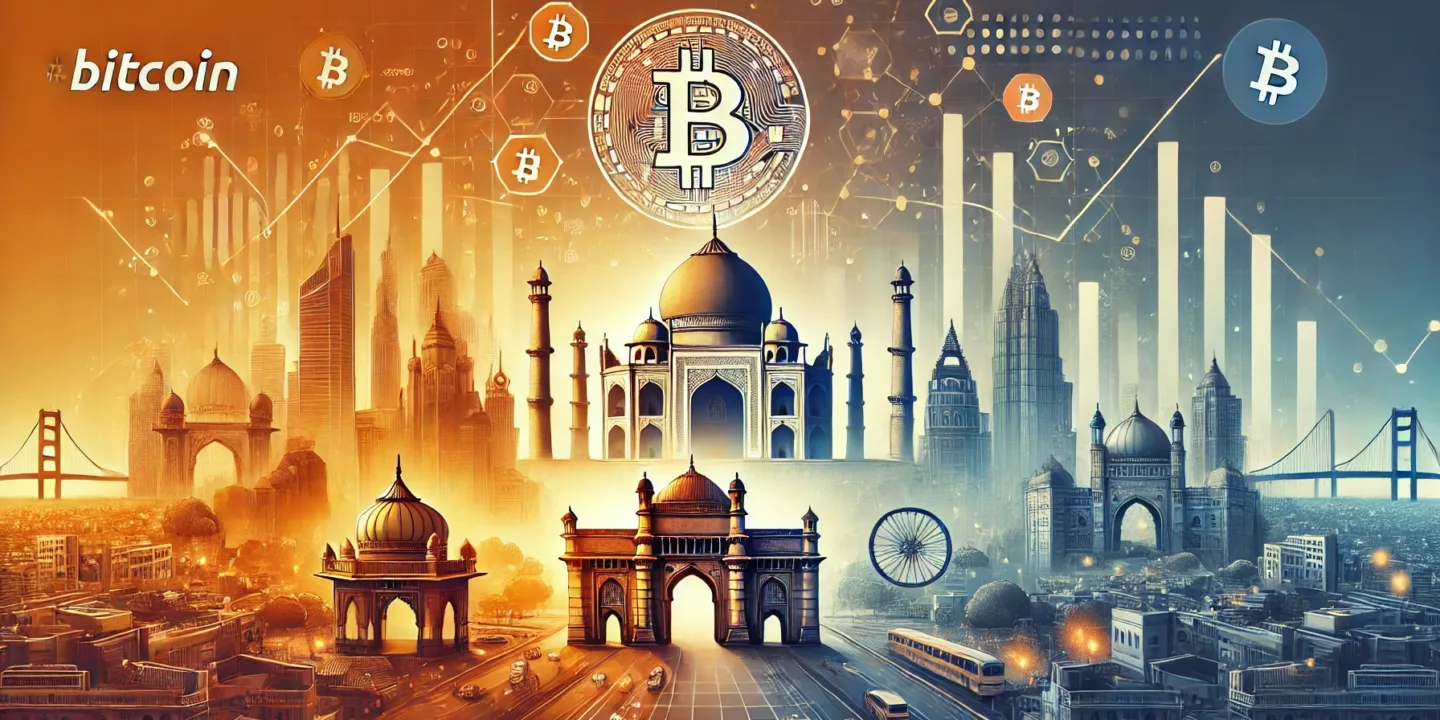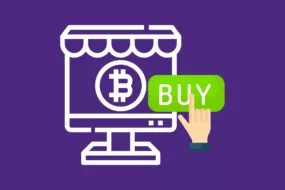
From ₹10K to ₹1 Cr: Bitcoin’s Incredible Journey in India
Bitcoin has transformed from a niche digital asset into a mainstream investment choice in India. From its humble beginnings at around ₹10,000 to crossing the ₹1 crore mark, Bitcoin’s journey reflects India’s growing interest in cryptocurrencies. This blog explores Bitcoin’s rise in India, its key milestones, regulatory impacts, and its future for Indian investors.
Key Takeaways
- Analysis of Bitcoin’s price growth from ₹10K to ₹1 Cr.
- Major economic events influencing Bitcoin’s rise.
- Regulatory changes shaping India’s crypto market.
- Cultural and technological adoption factors.
- The future potential of Bitcoin in India.
What Was the Starting Point of Bitcoin’s Journey in India?
Bitcoin entered India around 2011-2012 when global crypto discussions started gaining traction. Early adopters, mostly tech enthusiasts and blockchain developers, mined or acquired Bitcoin at prices as low as ₹10,000 per BTC.
During its early years, awareness about Bitcoin remained limited, but tech forums and international exposure slowly introduced it to Indian investors. As digital transactions grew in India, Bitcoin found its place among risk-taking investors and innovators.
The first wave of Bitcoin investors in India mainly consisted of software engineers and finance professionals who saw Bitcoin as an alternative investment asset. With limited awareness and resources, early adopters often had to rely on international forums and exchanges to trade Bitcoin. As awareness and adoption grew, Indian traders realized Bitcoin’s potential as a store of value and a hedge against economic uncertainty.
Also Read: Bitcoin At ₹1 Crore: What Are The Fueling Factors
How Did Bitcoin’s Value Evolve from ₹10K to ₹1 Cr Over the Years?
Bitcoin’s price growth journey in India has been marked by volatility and significant milestones:
| Year | Approximate Price (₹) | Key Event |
| 2012 | 10,000 | Bitcoin enters India |
| 2013 | 50,000 | Early traders experiment with BTC |
| 2017 | 2,00,000 | Bitcoin boom due to demonetization |
| 2020 | 10,00,000 | Institutional adoption & COVID-19 push |
| 2021 | 50,00,000 | Bitcoin crosses $60,000 globally |
| 2024 | 1,00,00,000 | Bitcoin reaches ₹1 Cr milestone |
The surge in Bitcoin’s price has been influenced by several global and local factors, including demand-supply dynamics, institutional investments, government policies, and macroeconomic trends. As awareness grew, more Indian investors began to see Bitcoin as an attractive asset for wealth preservation and capital appreciation.
What Key Milestones Shaped Bitcoin Adoption in India?
Several factors contributed to Bitcoin’s mainstream acceptance in India:
- Demonetization (2016): The cash crunch led people to explore digital assets like Bitcoin.
- RBI Banking Ban & Reversal (2018-2020): Crypto trading was initially banned but later revived after a Supreme Court ruling.
- Global Institutional Interest (2020-2021): Companies like Tesla and MicroStrategy investing in Bitcoin encouraged Indian investors.
- Crypto Taxation Announcement (2022): The Indian government imposed a 30% tax on crypto gains, making Bitcoin legally acknowledged.
- Rise of Web3 & DeFi (2023-2024): Bitcoin gained traction as India became a hub for blockchain innovation.
One of the most defining moments for Bitcoin in India was the 2018 RBI ban, which prohibited banks from processing cryptocurrency transactions. This led to a sharp decline in trading volumes and forced many exchanges to shut down. However, in 2020, the Supreme Court of India overturned the ban, which led to a renewed wave of interest in Bitcoin and a surge in trading volumes.
How Have Regulations and Policies Impacted Bitcoin’s Growth in India?
Regulatory uncertainty has been a double-edged sword for Bitcoin in India:
- 2013: RBI issues a cautionary statement against crypto.
- 2018: RBI bans banks from supporting crypto transactions.
- 2020: Supreme Court overturns RBI’s ban, reigniting Bitcoin trading.
- 2022: The Indian government introduces a 30% tax on crypto gains and 1% TDS on transactions.
- 2023: SEBI and RBI push for a structured framework to regulate crypto assets.
- 2024: Ongoing efforts to refine regulations, with a focus on consumer protection and the potential introduction of a digital rupee.
The introduction of taxation and compliance requirements has added legitimacy to Bitcoin, increasing trust among Indian investors despite concerns over high taxation rates. While regulation remains a work in progress, Bitcoin’s recognition by the government signals its importance as a financial asset.
What Cultural and Technological Factors Drove Bitcoin’s Popularity in India?
- Tech-Savvy Youth: India’s young population, familiar with digital payments, quickly adapted to crypto.
- Financial Inclusion: Bitcoin provides an alternative investment for those excluded from traditional banking.
- Remittances & Hedge Against Inflation: Many Indians used Bitcoin to bypass expensive remittance fees and hedge against rupee devaluation.
- Rise of Web3 Startups: Indian blockchain startups drove awareness and adoption.
- Social Media Influence: Bitcoin became a trending topic among influencers, making it more accessible to retail investors.
- Alternative Investment Mindset: With rising inflation and stock market volatility, Bitcoin emerged as an attractive asset.
What Does Bitcoin’s Journey Reveal About the Future of Crypto Investments in India?
Bitcoin’s meteoric rise in India signals a promising future for crypto adoption:
- Regulatory Clarity: If regulations become favorable, crypto investments could further flourish.
- Institutional Adoption: More Indian financial institutions may integrate Bitcoin and blockchain technology.
- Mass Awareness: Increasing educational initiatives can drive more mainstream adoption.
- Integration with Web3: Bitcoin could play a vital role in India’s growing decentralized economy.
- Cross-Border Transactions: Bitcoin may enable easier and cheaper international money transfers.
- Potential for Stablecoin Adoption: With the rise of digital assets, stablecoins may gain traction as an alternative to Bitcoin.
ALSO READ: Future Of Cryptocurrency In The Next 5 Years
Conclusion
Bitcoin’s journey from ₹10K to ₹1 Cr in India is nothing short of remarkable. Despite regulatory hurdles, its adoption continues to grow. For Indian investors looking to explore Bitcoin and other cryptocurrencies, Mudrex provides an easy-to-use platform with the best conversion rates, diverse coin options, and accessible learning resources. As the crypto landscape evolves, Bitcoin’s role in India’s digital economy will only strengthen. Join the Mudrex community on Telegram today, and stay ahead in the world of crypto with expert insights, tips, and updates right at your fingertips!
FAQs
When did Bitcoin first become available in India?
Bitcoin started gaining traction in India around 2011-2012, with the emergence of crypto trading platforms and online communities.
What was the lowest price of Bitcoin in India?
In its early days, Bitcoin traded for as low as ₹10,000 in India before skyrocketing in value.
How has the Indian government regulated Bitcoin?
The Indian government introduced a 30% tax on crypto gains and a 1% TDS on transactions in 2022, providing legal acknowledgment but increasing tax burdens.
What factors contributed to Bitcoin’s popularity in India?
Key factors include demonetization, financial inclusion, remittance advantages, and growing blockchain awareness.
Is Bitcoin legal in India?
Bitcoin is not banned in India, but it is taxed and regulated. The government is working on a structured regulatory framework for cryptocurrencies.





